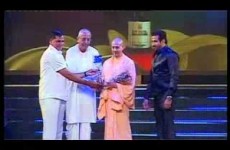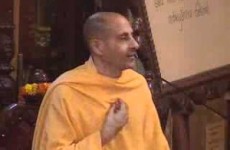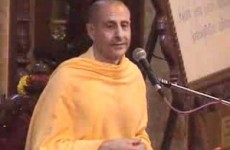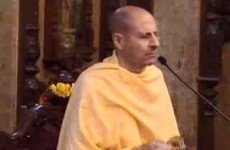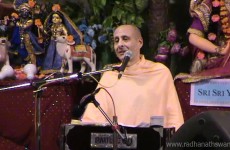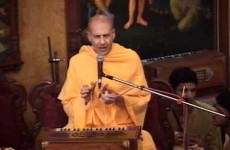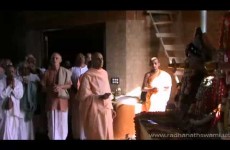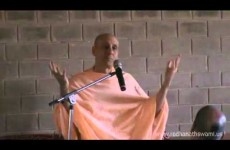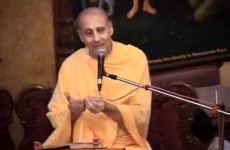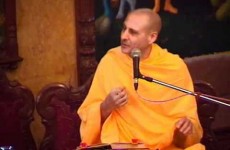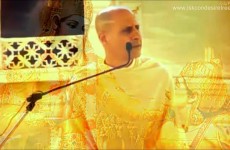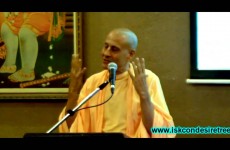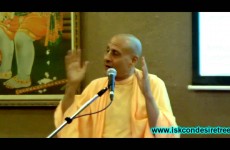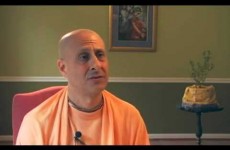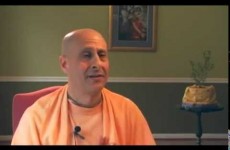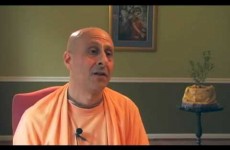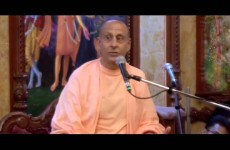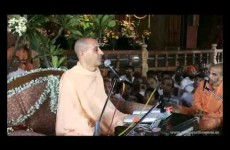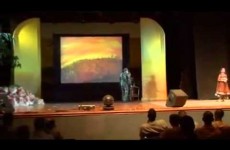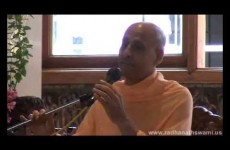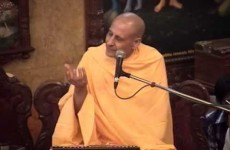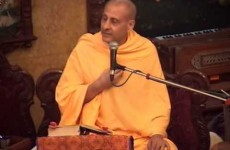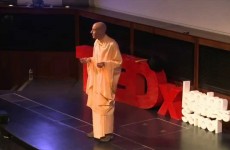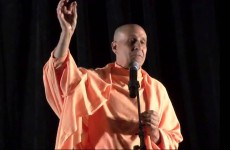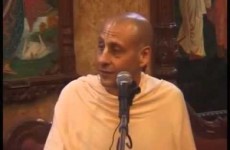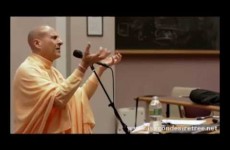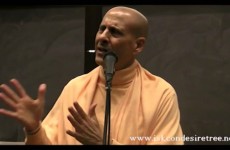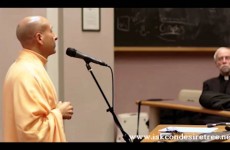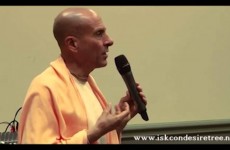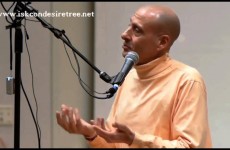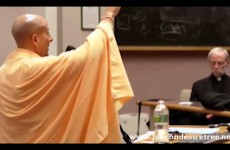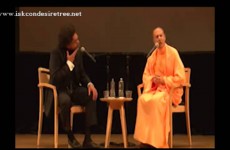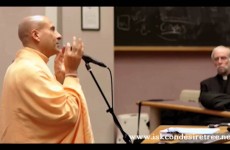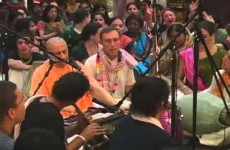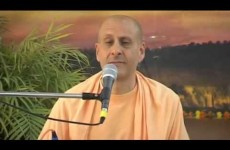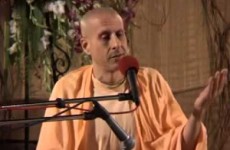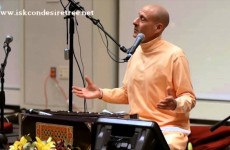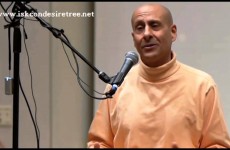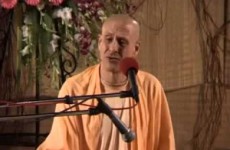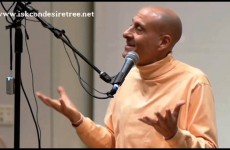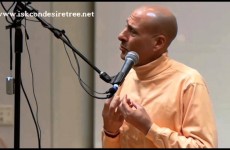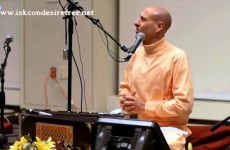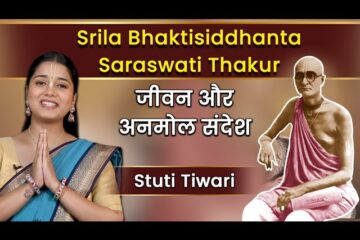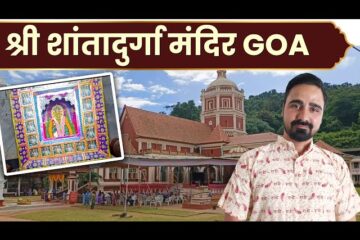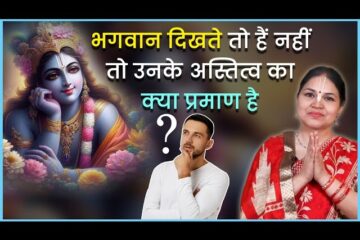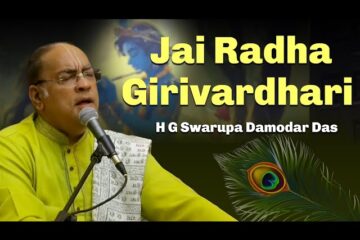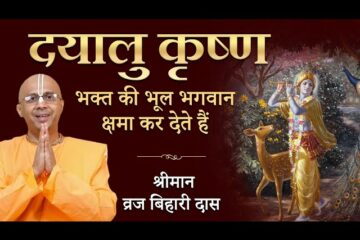Radhanath Swami on True Vaishnava Culture In Vrindavan @ ISKCON Chowpatty Srimad Bhagavatam Canto 10 Chapter 03 Verse 47 On 19 Nov 2011
SB 10.3.47
tatas ca saurir bhagavat-pracoditah
sutam samadaya sa sutika-grhat
yada bahir gantum iyesa tarhy aja
ya yogamayajani nanda-jayaya
Word for word:
tatah — thereafter; ca — indeed; saurih — Vasudeva; bhagavat-pracoditah — being instructed by the Supreme Personality of Godhead; sutam — his son; samadaya — carrying very carefully; sah — he; sutika-grhat — from the maternity room; yada — when; bahih gantum — to go outside; iyesa — desired; tarhi — exactly at that time; aja — the transcendental energy, who also never takes birth; ya — who; yogamaya — is known as Yogamaya; ajani — took birth; nanda-jayaya — from the wife of Nanda Maharaja.
Translation:
Thereafter, exactly when Vasudeva, being inspired by the Supreme Personality of Godhead, was about to take the newborn child from the delivery room, Yogamaya, the Lord's spiritual energy, took birth as the daughter of the wife of Maharaja Nanda.
Purport:
Srila Visvanatha Cakravarti Thakura discusses that Krsna appeared simultaneously as the son of Devaki and as the son of Yasoda, along with the spiritual energy Yogamaya. As the son of Devaki, He first appeared as Visnu, and because Vasudeva was not in the position of pure affection for Krsna, Vasudeva worshiped his son as Lord Visnu. Yasoda, however, pleased her son Krsna without understanding His Godhood. This is the difference between Krsna as the son of Yasoda and as the son of Devaki. This is explained by Visvanatha Cakravarti on the authority of Hari-vamsa.










